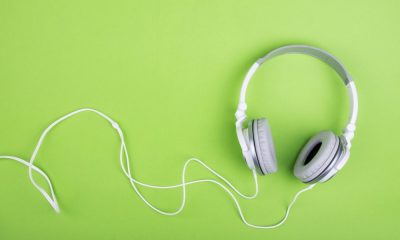LATEST FINANCIAL NEWS
Inflation, employment, profits and investments: A year after recovery began, here’s how the economy is graded
About a year has passed since the economy started to recover from the coronavirus recession, and the rebound so far is solid if not uniformly positive.Some key measures have improved substantially, including corporate profits and the stock and housing markets. Others show worrisome trends, such as federal debt levels and income inequality. Others are mixed, like employment. Here’s how I grade different facets of the economy, and why. Growth hitting on all cylindersWhen the COVID-19 pandemic arrived and forced business-lockdown measures, it precipitated a steep economic slide starting around February 2020. But activity began to recover quickly, with growth resuming in May or June of that year, according to researchers at the Federal Reserve Bank of St. Louis.Since then, helped by federal stimulus and other relief, the momentum has continued. It includes a robust, preliminary 6.4% rise in annualized Gross Domestic Product in the first quarter of 2021.’The DNA of work has changed’: Many Americans want to keep working from home after the COVID-19 crisis passes’I really had sticker shock’: Will a reopening economy mean surging prices for Americans?The mix of vaccinations, business reopenings and record federal stimulus measures “have combined to produce what should be one of the best years for growth ever,” said Ryan Detrick, chief market strategist for LPL Financial.If the current pace continues, the economy this year not only will recover all of its lost ground but could surpass where it was projected to be before the pandemic arrived, said David Kelly, global chief strategist at JPMorgan Funds.Economic-growth grade: A.Employment not fully recoveredEmployment often rebounds more slowly than the economy overall, partly because businesses are wary about hiring until they’re sure demand is picking up. That pattern has continued. The nation’s jobless rate has tumbled from 14.8% in April 2020 to 6.1% in April 2021. But that’s still above the 3.5% rate of early 2020, and a full jobs recovery doesn’t seem likely until the end of the year, at the earliest.While the pace of hiring has slowed, it partly reflects short-term difficulties in getting workers to accept jobs in light of enhanced federal unemployment benefits, Kelly said. But he expects hiring to pick up as those temporary incentives expire around Labor Day, as the economy returns to a more normal footing and as more employers offer higher wages and signing bonuses to lure jobseekers.Employment grade: C.Inflation spooking investors a bitThe anecdotes are starting to roll in: Sky-high lumber prices, rising costs for rental cars, a global semiconductor shortage and employers scrambling to find workers. These and other indicators could point to higher inflation ahead. “Supply bottlenecks, labor shortages and rising consumer demand (have) continued to put upward pressure on inflation,” Kelly noted. “The economy seems more threatened by broadly rising inflation today than at any time over the past four decades.”From managing inflation to producing cash: Why you should invest in dividend-paying stocks for retirementStill, the recent trend could prove a mere blip against the long-term, low-inflation backdrop. In fact, price increases averaging perhaps 3% to 3.5% or so potentially is healthy. But if inflation intensifies in coming months, that could harm consumers and businesses alike and push up interest rates further.Inflation grade: B.A worsening debt situationThe federal debt outlook is dire, with neither major political party showing much interest in addressing it. The trend was worrisome even before Congress authorized programs to fight the pandemic that ultimately will add $5.23 trillion to the debt, estimates the Committee for a Responsible Federal Budget.Fortunately, states and municipalities have done a better job keeping their borrowing under control — out of necessity — and so have consumers. A new report from credit bureau TransUnion found that serious consumer delinquencies are mostly lower compared with the pre-pandemic situation. The past year was marked by “the wherewithal of the U.S. consumer to persevere under the most extreme conditions,” said Matt Komos, a TransUnion vice president.Government stimulus and forbearance programs have certainly helped consumers, along with an improving employment situation. Still, it’s hard to be sanguine about the debt situation in light of how much the federal government is borrowing.Debt grade: D.Financial equality gap wideningThe past year was good for the “haves” and bad for the “have-nots.” Wealthier Americans saw the values of their homes and stock market portfolios surge, and they likely held onto their jobs. Less-affluent people faced more employment disruptions and didn’t have as much, if anything, in housing or investment wealth — meaning they missed out on the boom in those markets.President Biden’s plan to raise income taxes on the wealthy could trim the wealth gap a bit, but trends in the stock and real estate markets seem more consequential for this group, while job prospects, and the potential for wage increases, figure more prominently for those near the bottom.Incidentally, Americans now say it takes $1.9 million in personal net worth (assets less liabilities) to be considered “wealthy,” according to Charles Schwab’s Modern Wealth Survey for 2021. That’s down from $2.6 million in the 2020 survey, reflecting diminished expectations due to the pandemic. Similarly, the amount needed to live comfortably also took a dive, to $624,000 in the latest survey from $934,000 in 2020. Most Americans aren’t anywhere near those levels, however.Equality grade: D.Corporate profits rising at brisk paceIf there’s one area of the economy where overachievement is the norm right now, it’s profit growth among larger corporations.”To call this earnings season a blowout would be an understatement,” wrote Jeffrey Buchbinder, equity strategist at LPL Financial in a recent commentary. For those companies in the Standard & Poor’s 500 index that have reported first-quarter results, “earnings growth is tracking to a 49% year-over-year increase,” he said.Buchbinder attributes the strength to several factors including steady progress in reopening the economy, a 37-year high in manufacturing activity (according to the Institute for Supply Management in Tempe), a weaker dollar that has boosted exports and “tremendous efficiency” in managing corporate expenses during the pandemic.Smaller businesses haven’t fared as well, but for big companies it’s all good right now.Profitability grade: A.Investments on a rollAmericans hold most of their growth assets in stock investments and real estate, mainly housing, and both of these markets are resilient lately.The stock market recovered quickly from the pandemic, with the broad Wilshire 5000 index now up about 90% from its March 2020 low. While valuations are stretched, the market’s breadth has improved — a healthy sign — with more stocks rising in price, not just the technology giants that dominated over much of 2020.The stock surge reflects a recovering economy and higher profits, while home prices have responded to catalysts including tight supplies, low mortgage interest rates and higher prices for lumber and other supplies. The median or midpoint price for existing homes nationally has jumped 16.2% over the past year to a record $319,200, reported the National Association of Realtors.That hasn’t helped affordability, with “many families facing the reality of being priced out entirely,” noted Lawrence Yun, the group’s chief economist. But for current homeowners, it is a boom time with no end in sight.Investments grade: A.Reach the reporter at russ.wiles@arizonarepublic.com.
Source link








